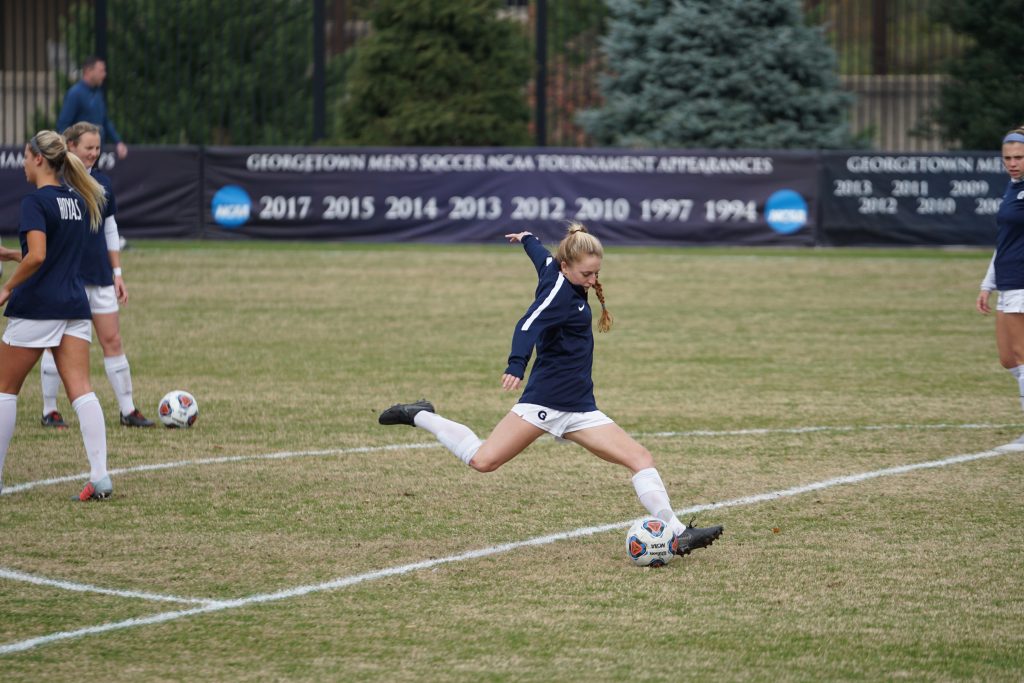
I’ll start off by saying that I don’t like sports. I have little to no knowledge about most sports, P.E. was my least favourite lesson at school, and I spent the majority of Sports Days at home ‘sick’.
But while brainstorming ideas for this LGBT+ issue of Orbital and researching how many premier league footballers have come out as gay (hint: really, really not many at all), I stumbled across a woman who has now introduced me to the incredible history of women’s football.
Lily Parr’s football career began in 1919, at a time when the popularity of women’s football was at an unprecedented high, until the Football Association banned women from playing on their member grounds in 1921 (due to women’s teams playing charity matches to raise money for the families of striking miners, and also due to plain misogyny). This ban wasn’t lifted until 1972.
Parr was born in 1905 into a working-class family in Lancashire, where she joined the Dick, Kerr’s Ladies’ team at age 14. The reasons to love her are endless: she was over six feet tall, she scored over 1,000 goals during her career, she was openly gay, and aside from being an incredible footballer, she was known for her large appetite and chain-smoking. She even once broke a male goalie’s arm by shooting a penalty after he taunted that she wouldn’t be able to score past him. She’s like that really cool and kind of scary girl you had a huge crush on in school.
Just one example of the success of women’s football is Boxing Day in 1920, when Parr’s team drew a crowd of over 53,000 to Goodison Park in Liverpool. When the FA took a stand against women’s football, the Dick, Kerr Ladies toured America instead, playing men’s teams. When they returned, the space and support for women’s football had been seriously diminished, but definitely not burned out.
The Dick, Kerr Ladies’ team became Preston Ladies after losing support from their factory (after which they were named) and Parr played for them until 1951. During this time, Parr retrained as a nurse and lived with her partner, Mary.
She died in 1978 after a battle with cancer, living long enough to see the FA repeal the ban against female football teams playing in their stadiums. In 2002, Parr became the only woman to ever have been inaugurated into the National Football Museum Hall of Fame.
Sure, I hate sports, probably because I’m really bad at literally all of them. But at least if I was good, I wouldn’t be denied the opportunity to follow my passion. It’s thanks to women like Lily that the popularity of female football teams has grown and developed, despite the overbearing inequality that still plagues the game. As it turns out, adding one of my greatest interests (historical Sapphic women) makes even my least favourite topic in the world (football) incredibly interesting!
